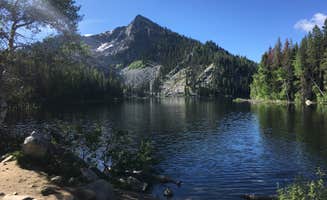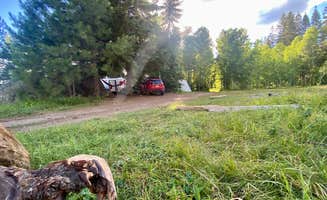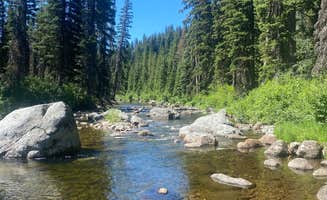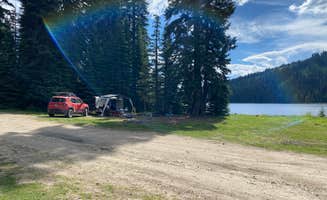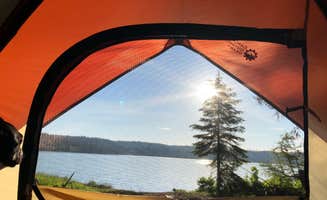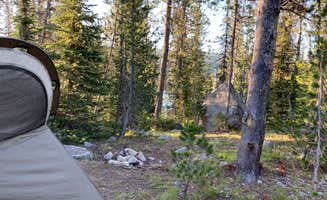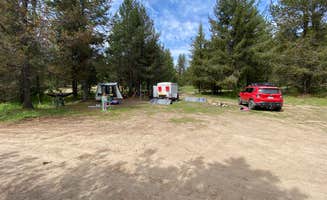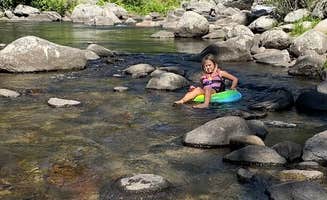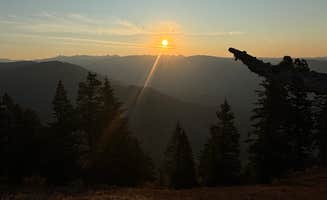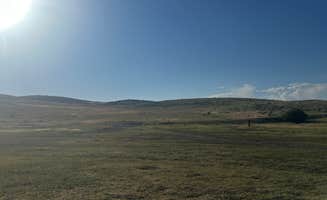Primitive camping near Lake Fork, Idaho offers secluded sites throughout the Payette National Forest at elevations ranging from 5,000 to 7,000 feet. The area's camping season typically runs from late May through October, with July and August seeing nighttime temperatures in the 40s even during peak summer. Forest roads accessing many sites close after significant snowfall, typically by late October.
What to do
Paddleboarding opportunities: Upper Payette Lake provides calm waters ideal for paddleboarding with minimal motorized traffic. "Bring your SUP or kayak, you'll want to be on the water! Lots of local fishing, hiking, and MTB trails," notes a visitor to Upper Payette Lake Dispersed Camping Area.
Fishing for trout: Mountain lakes throughout the region offer trout fishing opportunities with minimal competition from other anglers. At Goose Lake Camping Area, one camper mentioned it's an "awesome undeveloped camp sites spaced out along the lake great place to camp and enjoy some mountain lake trout over a fire along with the cool crisp air at night."
Hiking nearby trails: Several dispersed sites provide direct access to hiking trails. Lake Louie requires a hike to reach but rewards with solitude: "Challenging hike in with packs but very doable. Once you reach the lake it is stunning. We did this hike in July in the evening time. There was plenty of shade and a cool breeze that made it enjoyable."
What campers like
Seclusion from crowds: Many sites offer privacy rarely found at developed campgrounds. A Warren Wagon Rd camper noted, "We love this spot. We ended up taking 3 spots because we had a group with us... It does get busy on the weekends."
Lake views and waterfront camping: Multiple dispersed sites offer direct lakefront placement. At Brundage Reservoir, one camper enjoyed "paddle boarding and being the only one on the lake. Only one other camper on the weekend in a 7 site dispersed camping area. Each spot in its own area."
Cooler temperatures: The higher elevation provides relief from summer heat. At Rapid Creek Dispersed Camping Area, a camper noted, "It's high enough in elevation that this place gets nippy at night. I stayed in early August and the temps dropped into the upper 30s at night."
What you should know
High clearance vehicles recommended: Many forest roads deteriorate after rain. "After about 1/2 mile, you will see the lake off to your right. There are camp sites all along this stretch of the lake with direct access to the lake... Several roads are VERY rough and have deep ruts in them, and I personally wouldn't risk driving them without a vehicle that has plenty of clearance."
Limited or no facilities: Most sites have no amenities. "You can't see rapid creek from the campground but you can hear it. And that's really just as good. The white noise from the creek matched with the occasional bird or other nature sound is one of the most relaxing things on the planet."
Limited cell service: Most dispersed sites have no cellular connectivity. One exception was noted by a visitor to Upper Payette Lake Dispersed Camping Area: "We set up Starlink so we could work on Friday and had no issues with the connection."
Tips for camping with families
Hammock camping options: Tree cover at several sites creates ideal hammock setups. At Lake Louie, "Hammocking is ideal due to the close clumping of trees all around the lake."
Accessibility considerations: Some sites offer easier access for children than others. At Lost Valley Reservoir Dispersed Camping Area, "Great spot tucked into the trees. Some sites are a bit cramped, but enjoyable. Cool trails and nearby water to keep the kids occupied."
Restroom availability: A few dispersed areas include vault toilets. "One of the few dispersed areas I've visited with multiple bathrooms," noted one Upper Payette Lake camper, making it more suitable for families.
Tips from RVers
Site leveling challenges: Many dispersed sites have uneven terrain. At Little Payette Lake, a visitor cautioned, "Sloped ground so make sure you can level all your things."
Road width limitations: Several access roads narrow significantly. One Lost Valley Reservoir camper advised, "The road is tight but you can get a fifth wheeler in. Every spot looks very easy backing in. No sharp corners, no sacrifices were made in order to back in."
Seasonal water levels: Reservoir shorelines change significantly through summer. "The lake is small and as the summer progresses and water is drained from the reservoir, it shrinks. I prefer camping here until about the 1st or 2nd week of August. After this, the water levels drop drastically and green algae begins to accumulate around the lakes edge."


